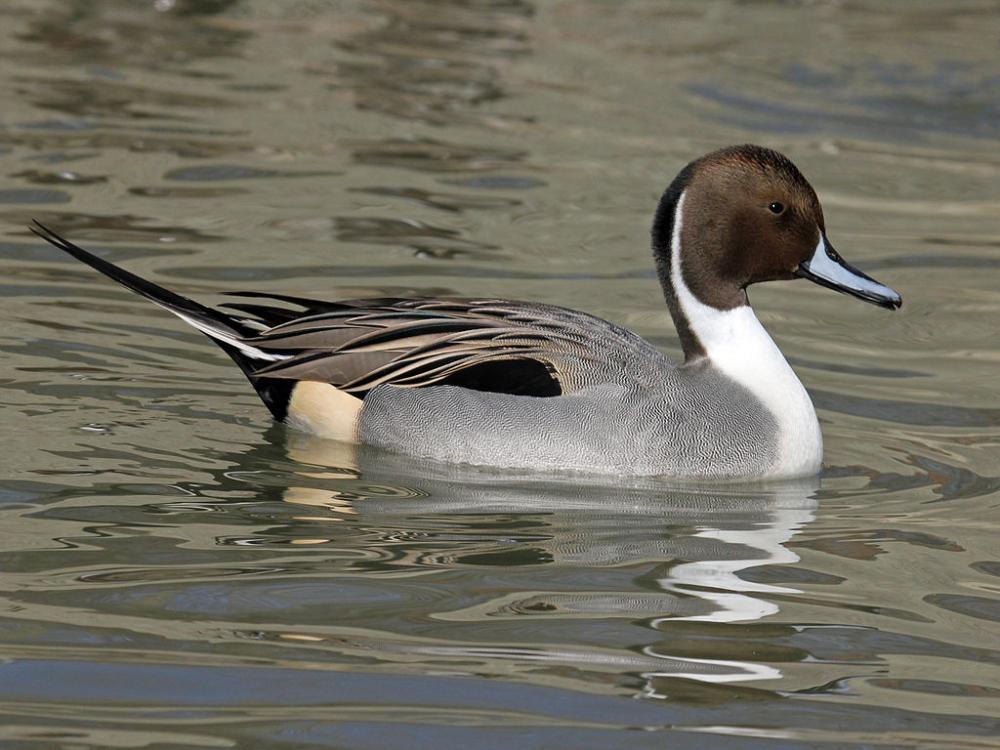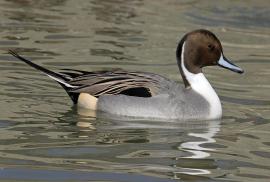Guide to Boreal Birds
Overview
Although not as numerous as the Mallard, this graceful game bird is still a widespread and common duck, especially in the West, where about half of North America's six million are found. Winter flocks can be very large, numbering in the thousands. Seeds of aquatic plants are the Pintail's main food, but in winter it also eats small aquatic animals; when freshwater habitats freeze over, it resorts to tidal flats, where it feeds on snails and small crabs. Male Northern Pintails are aggressive, often forcing their attentions on females of other species.
Description
Male, 25-29" (64-74 cm); female, 21-23" (53-58 cm). Long-necked slender duck. Male has brown head, white underparts and neck with white line extending onto side of head, grayish back and sides, and long, black, pointed central tail feathers. Speculum metallic brown and green with white rear border that shows in flight. Feet gray. Female mottled brown, similar to female Mallard, but paler, grayer, and more slender, with brown speculum bordered with white at rear edge only; tail is more pointed than in female Mallard.
Voice
Distinctive 2-tone whistle; females quack.
Nesting
6-9 pale greenish-buff eggs in a shallow bowl of grass lined with down, often some distance from water.
Habitat
Marshes, prairie ponds, and tundra; sometimes salt marshes in winter.
Range/Migration
Breeds from Alaska and Labrador south to California, Nebraska, and Maine. Locally in East and occasionally elsewhere. Winters south to Central America and West Indies. Also in Eurasia.



